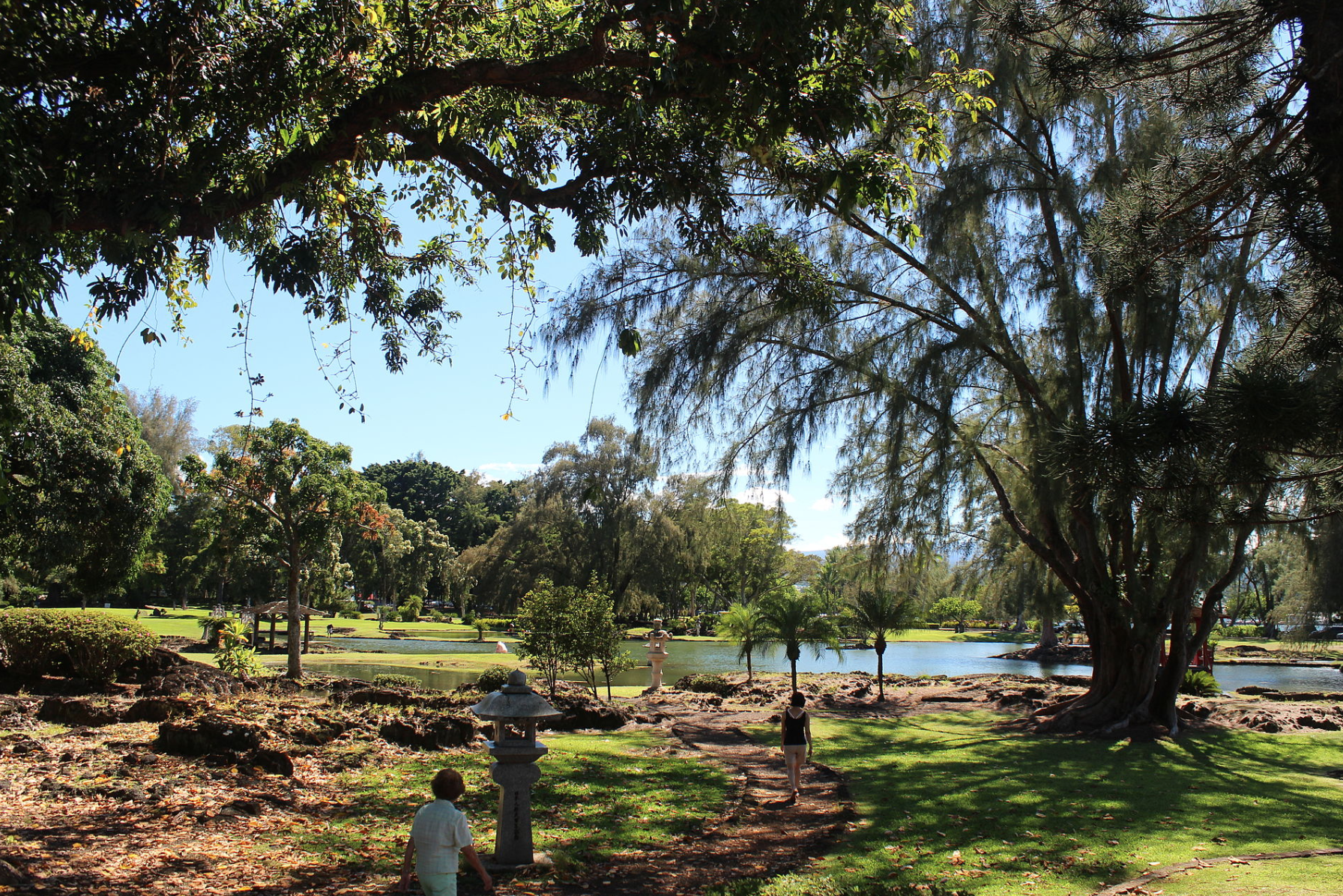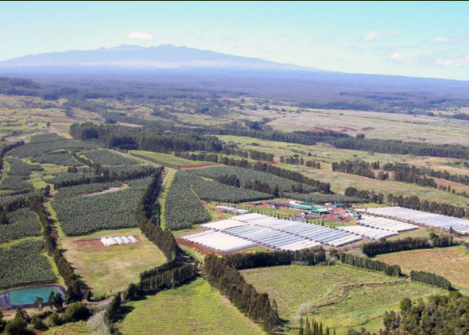Kapono and I had the truck loaded with lettuce, bananas, Japanese cucumbers, green onions and five types of tomatoes, and we were just about to leave for the Kino‘ole Street Farmers Market Saturday morning, when we heard a Civil Defense weather alert announcing that severe flooding was imminent.
We looked at the weather satellite image of the Big Island and it was bad.
Here’s how it looked at 9:35 a.m. Hawai’i time Saturday morning. The blue shows the remnants of the moisture-laden air that came up from the south and dropped on land as it was pushed inland by the northeast tradewinds.

Outside, there was pounding rain with thunder and lightning. Lightning always makes me concerned for my employees’ safety. I had to make a decision: Should we go to the Farmers Market, where customers might be waiting for us, or go to the farm to see how our workers were doing? No choice—we drove to the farm.
Along the way we saw streams that are normally dry but were running at very high levels because of the storm. Roads were closed, warning lights were flashing and water was flooding across the main roads. Police and public works personnel were out in yellow rain gear directing traffic.
(All photos by Kapono Pa, except #6 and #12 were taken by Richard.)


When we came to the Bayfront Highway, we could see a few vehicles standing in water halfway up their windows.


The soccer fields and Pau‘ahi Street, which runs down from the County Building, were entirely flooded and blocked off.

We drove across the singing bridge and looked upstream. The Wailuku River was an angry beast. It looked like serpents were writhing downstream, their smoke shooting in the air.


At the farm, everybody and everything was okay. The Soil Conservation plan we follow, which retains all the former sugar company’s diversion berms, diverted the storm water just as planned. The sugar industry was on that land for 100 years before us, and they knew a thing or two about coping with heavy rains.
In 24 hours, 11 inches of rain fell at the farm, or 297,000 gallons per acre. This means 177,309,000 gallons fell on our 597-acre farm in 24 hours. I tried to explain to the County Council that the drainage is good in our area and we do not need special rules on flooding.
After checking everything—such as noting where the water was high and where we need to shore up the berms—we drove back to Hilo along the winding, scenic route.
The river beneath the six-ton bridge was raging. It was clear to me that if the bridge gave way and we fell into the water, there would be zero chance of survival. For a moment it entered my mind to turn back. But, I thought, this road has been here for more than 100 years and it was once the main route to Kona. We
drove across it, but it was unnerving.


Waterfalls down a hillside on the scenic route
We took the cutoff to Wainaku so we could drive across the second concrete bridge and look at the Wailuku River up close. Kapono took a picture of a couple of kids at the park in Pu‘ueo, doing what comes naturally in a big, flooded yard—running as fast as they could and seeing how far they could slide.


We parked and walked on the bridge. One had to speak up to be heard over the river. It was kind of scary.

Then we walked up to the third bridge; the one alongside the river and behind the Federal Building. There were lots of people out doing the same thing. There was mist in the air from the churning water careening over waterfalls and bouncing off the river walls. The next bridge upstream looked vulnerable, and I wondered if there was even a remote chance that the concrete supports under us could be undermined by the tremendous force of the water. It was a humbling experience.

We humans think we are in control. But witnessing the force of nature makes us realize that we are just passing through, and that we need to keep in mind that we aren’t in charge here.
At the very best, we are caretakers. We need to pay attention to what we’re doing.


























